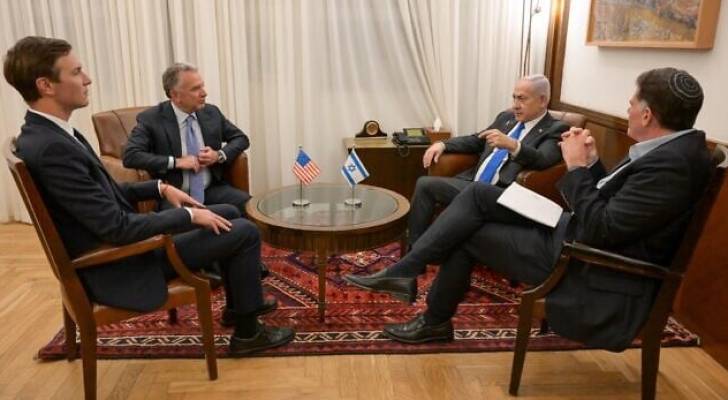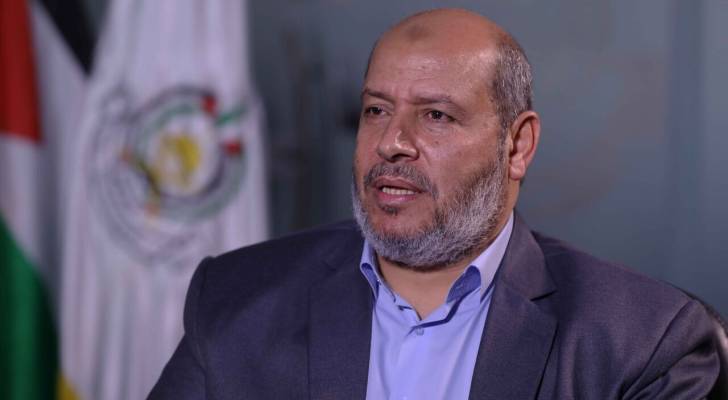Two years of Israeli genocide on Gaza Strip - By Michael Jansen, The Jordan Times
This has been a week of taking stock of the situation in Gaza. UNRWA has issued a factsheet describing the devastation and the humanitarian impact of Israel's war on Gaza to mark two years since the offensive was launched.
As the chief UN organisation in Palestine, the UNRWA refugee agency has been responsible for the welfare of nearly 6 million Palestinians in occupied Palestine, Jordan, Lebanon, and Syria made refugees by Israel during its war of establishment in 1948. The information included in this factsheet shows that Israel's response has been hugely disproportionate when the damage and destruction sustained by UNRWA facilities alone are considered. UNRWA is not the sole victim.
More than 10 per cent of Gaza's population has been directly or indirectly killed during this war. The number of killed is 67,075 and injured 169,430, making 236,505 casualties.
The war has displaced a total of 5.27 million in Palestine, Iran, Lebanon, and Israel. The report says, "Mass population displacement has been a significant feature of the violence experienced in Gaza, Iran, Israel, Lebanon, and the West Bank." While some people have returned to their homes, others have not. No figures were given for Syria or Yemen as none have been available.
UNRWA says that about 80 percent of structures across Gaza have been damaged or destroyed, 845 people killed while sheltering in UNRWA facilities and more than 370 UNRWA staff members have been killed. Israel has conducted more than 790 attacks on health workers and medical sites rendering only four out of 22 UNRWA health centres operational. Nearly 100 per cent of cropland ruined or inaccessible while nearly 90 percent of water and sanitation infrastructure has been destroyed or damaged. Hygiene materials unavailable for 500,000 women and girls while soap for cleansing and washing is unavailable for 60 percent of households. Forty percent of families live near waste dumps. Ninety per cent of UNRWA schools have been damaged or destroyed denying 660,000 children education for a third year. Half a million children have received psychological support due to trauma afflicted by the war.
Life in Gaza is grim. The World Food Programme (WFP) reported that the humanitarian situation in Gaza remains "horrific two years since the start of a war that has decimated lives, homes and livelihoods." Nevertheless, the WFP has "seen some progress in food security in the past few weeks. Several months ago, people "were going for days without eating. Now more families are eating daily." In July, 87 per cent of Gazans "had poor access to food" while that figure improved to 44 per cent by September. The WFP is delivering food daily and reaching the most vulnerable. Hundreds of thousands of Palestinians displaced from northern Gaza receive digital payments.
Besieged, blockaded and bombed Gaza City has received no food since September 12th when the Zikim border crossing closed. As a result, 500,000 in Gaza City are suffering from famine.
On his return from Gaza, UN children’s fund spokesman James Elder said, "Gaza City remains home to tens of thousands of children. Shoeless children push grandparents in wheelchairs around rubble. Mothers carry children whose skin is bleeding from rashes. Children shudder at Relentless airstrikes. And children gaze skyward tracking the fire from helicopters and quadcopters."
Wherever they are all Gazans asked, "Where can I go that will be safe?" He could reply, "Nowhere." Uncertainty rules day after day.
Muna, a resident of Gaza City. told Al-Jazeera, "People are following the reports about the end of the takeover of Gaza City, and say that they can move from place to place – but the situation is still dangerous. I personally am scared and for now I prefer that we – I, my husband and the children – do not go out until there's an official announcement about a cease-fire. We don't know when or where the next bombardment will be."
The Costs of War Project at Brown University in the US has issued three reports on the war. One on US arms and finance without which Israel cannot mount this war, the second on the direct and indirect deaths inflicted by the war, and the third on displacement, the flight from war, genocide and expulsion in Gaza, Iran, Israel, Lebanon and the West Bank.
During the past two years the US has provided $21.7 billion in military aid to Israel, according to policy analyst William D. Hartung of the Quincy Institute in Washington. Without this flow pf weaponry Israel could not have mounted and sustained this campaign, Israel's longest war. In addition, the US has spent $9.65-$12.07 billion on military operations in Yemen, Iran and the region.
The October 7th attack on Israel by Hamas is not a one-off event in a vacuum, the claim put forward by Israel and its allies, notably the US. This battle is the latest episode in a forever war. This began in November 1917 when in the infamous Balfour Declaration Britain pledged to facilitate the foundation of a Jewish homeland in Palestine when Palestinians were referred to as "non-Jewish communities" while they constituted 97 per cent of the population. Britain opened the gates of Palestine to Jewish immigration despite Palestinian opposition, violent protests in 1921, and the Palestinian 1936-1939 revolt. Britain also trained and armed Zionist "night squads" which raided Palestinian villages and morphed into the Zionists' underground army, the Hagenah.
Unable to quell rising violence, Britain proposed partition, the option adopted by the UN in 1947. This gave the Zionists 55 per cent of the country although they were one-third of the population and the two-thirds Palestinians 44 per cent, with Jerusalem to be administered internationally. On April 1st, 1948, six weeks before the declaration of Israel, the Hagenah began its conquest by occupying areas awarded to the Palestinian state. The war ended in March 1949 with Israel holding 78 per cent of Palestine, and Jordan administering 22 per cent. Israel waged war again in 1967 and seized the remaining 22 per cent consisting of East Jerusalem, the West Bank and Gaza. Palestinians demand these areas for their state despite Israeli rejection and settlements which have been strategically placed to prevent the emergence of a contiguous Palestinian state in the West Bank. Israel rejects a Palestinian state as mentioning such a project undermines the legitimacy of Israel.
Latest News
-
 Nobel Peace Prize snubs Trump, honors Venezuelan opposition leader
Nobel Peace Prize snubs Trump, honors Venezuelan opposition leader
-
 "We ended the war in Gaza," says Donald Trump
"We ended the war in Gaza," says Donald Trump
-
 Witkoff, Kushner join cabinet meeting on Gaza deal after meeting with Netanyahu
Witkoff, Kushner join cabinet meeting on Gaza deal after meeting with Netanyahu
-
 “Gaza prisoner exchange to release 1,950 Palestinians, including 250 lifers”: al-Hayya
“Gaza prisoner exchange to release 1,950 Palestinians, including 250 lifers”: al-Hayya
-
 Crown Prince meets with France President
Crown Prince meets with France President